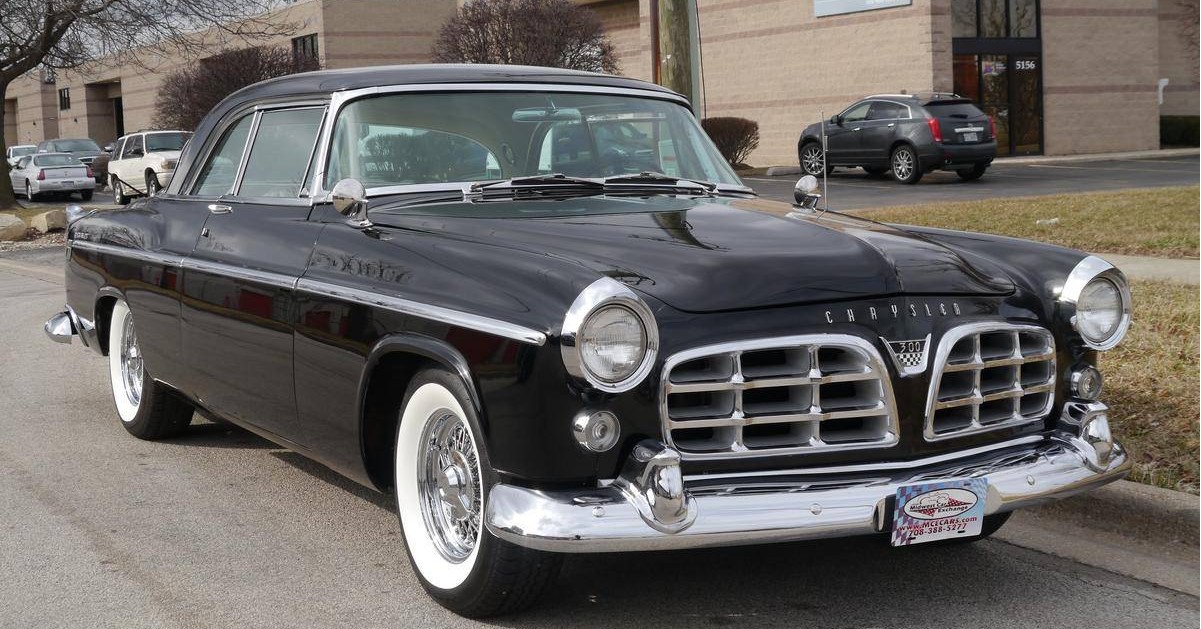Five Classic Cars That Don't Get Enough Attention
While many classic cars get a lot of press and attention at car shows, some do fall under the radar. However, these cars should be getting more attention as they were produced in limited quantities, and due to this, they always turn heads whether you show them at a classic car show or drive them down the street in your hometown. Many borrowed parts from other vehicles, so parts may not be as hard to find when restoring one as many first think. Each one offers something making it extra special. Here are five overlooked classic cars to consider.
1955 Chrysler C-300

The 1955 Chrysler C-300 was the first car introduced with a 300-horsepower engine, and many consider it the first high-performance car introduced to the public. To keep up with the power demands of the new engine, Chrysler also introduced a new two-speed Powerflite automatic transmission. Chrysler sold 1,725 of these cars during the year. Many drivers found this car a joy to drive on the highway because of its unusually firm front suspension. Many drivers loved the feel of the natural cowhide seats. With a suggested price tag of 4,110 dollars, it was the second most costly car buyers saw on a Chrysler showroom floor during that year. Buyers could choose between a convertible or a coupe.
Ford Thunderbolt

There were only one hundred Ford Thunderbolts made, so finding one may be tricky. This car combined the lightweight mid-size frame with the engine Ford was using on the Galaxy. This 'high rise' 427 cubic-inch V8 engine featuring four barrels was able to deliver up to six hundred horsepower. From the beginning, this car was meant to be driven on the track as it featured many weight saving measures on the front end while remaining street legal. If buyers chose a manual transmission for this car, then the suggested list price was $3,780. Alternatively, an automatic transmission added $200 to the bottom line. The first Ford Thunderbolts featuring a burgundy exterior and a tan interior were built in 1963 for the 1964 sales year.
Chevelle COPO 427

This car made by Chevrolet was so rare that its existence was debated for many years until old shop manuals covered in grease were finally uncovered. In the year before its release, executives with Chevrolet decided the company should stop making vehicles offering more than four hundred horsepower, but the decision did not sit well with some enthusiasts and dealers. Therefore, under hidden cover, the Chevelle COPO 427 was produced to answer those complaints. The COPO stands for Central Office Production Orders as each order had to receive special attention from the company's headquarters. Only 323 units were built, and ninety-nine of those were further transformed into a Yenko S/C Chevelle with additional work done in Pennsylvania. These cars featured a 425 horsepower V8 engine and were equipped with a four-speed manual transmission, although some had a more rugged transmission installed in them than others. Bench seats were standard, but buyers could get bucket seats as an option.
Buick Wildcat

Buick made the Wildcat, which was originally introduced as a subset of the Buick Invicta, from 1962 to 1970. It was one of the first models to feature a vinyl-covered top. Most Buick Wildcats featured a 401 cubic-inch V8 engine referred to as the Nailhead V8. The rarest of these cars is the Gran Sport Performance Group, which was available only in 1965. Buyers of this group had the choice of either a single-carburetor or a double-carburetor engine. Buick has also used this name for five concept cars during the company's history. When this car was first introduced in 1962, buyers paid 3,927 dollars for its luxuries, including vinyl bucket seats, a luxurious headliner, and special wheel covers.
Pontiac Grand Prix

The Pontiac Grand Prix was first introduced in 1962 as a replacement for Pontiac Ventura model. The original car had Morrokide vinyl bucket seats in the front and a bench seat in the rear and was one of the first vehicles to feature a rear speaker. Buick used its popular 303 horsepower 389 cubic inch engine they had been using in the Bonneville in the original model. After a few months, buyers also had the option of getting this model with a 421 cubic-cubic inch super duty engine, as well as the choice of two different three-speed manual transmissions or a four-speed transmission. In 1969, Pontiac introduced the second generation of this car choosing to stretch out the body and give it a more dramatic grill. Following federal law, this car was once again redesigned in 1973 to provide a heavier front bumper. This model was downsized in 1978, a front-wheel-drive became available in 1988, and a full-size sedan was released in 1997.







